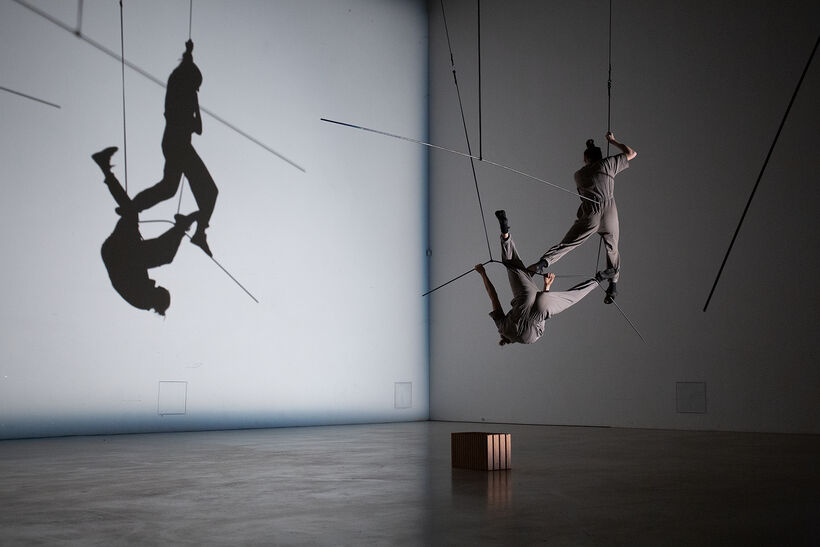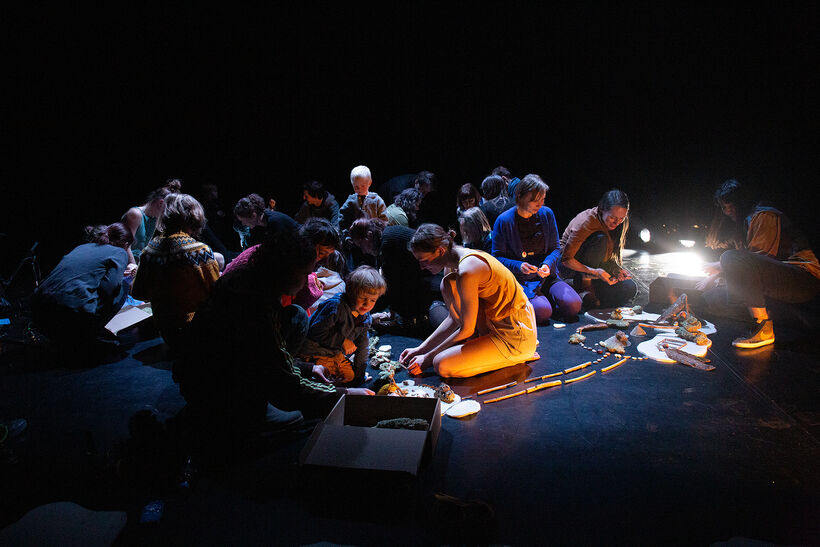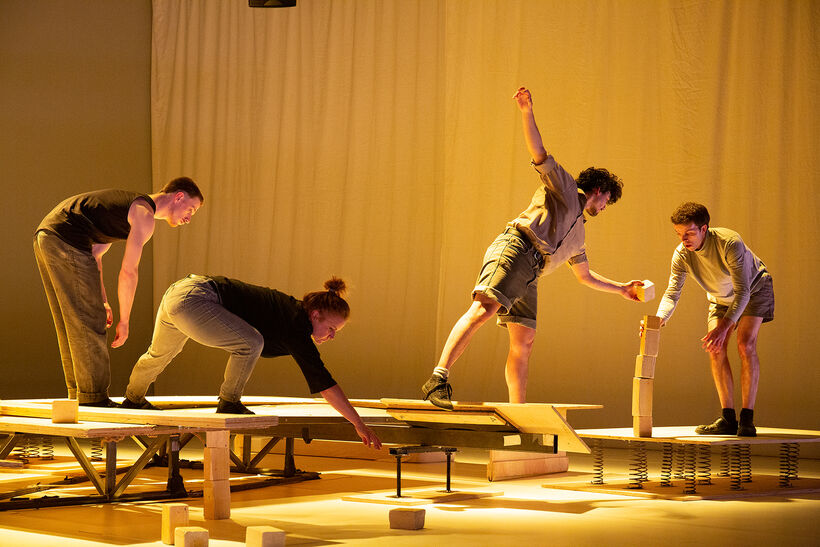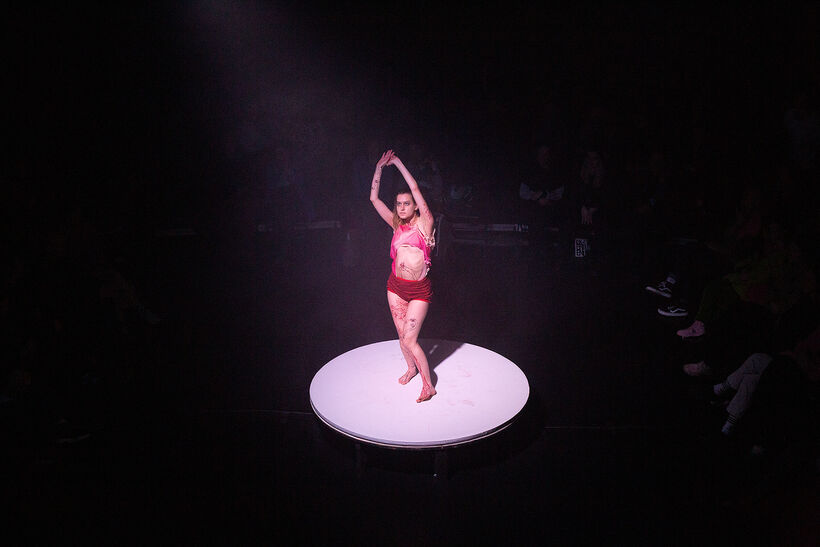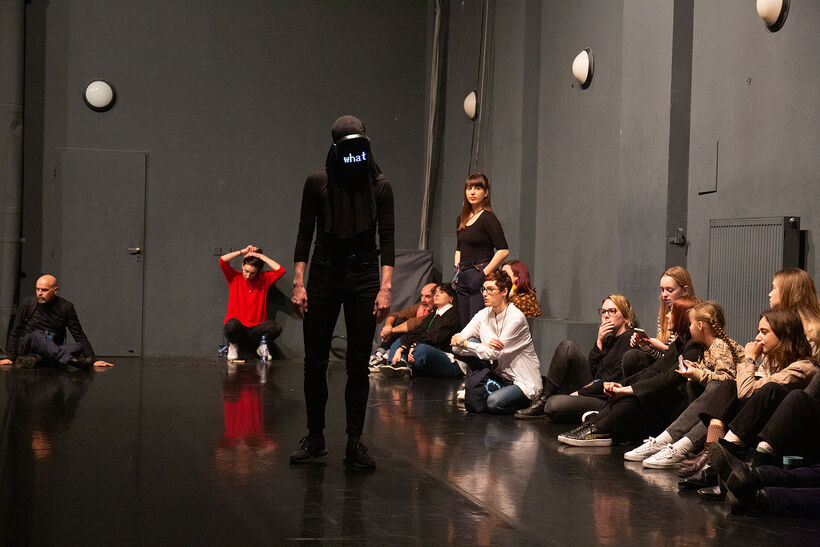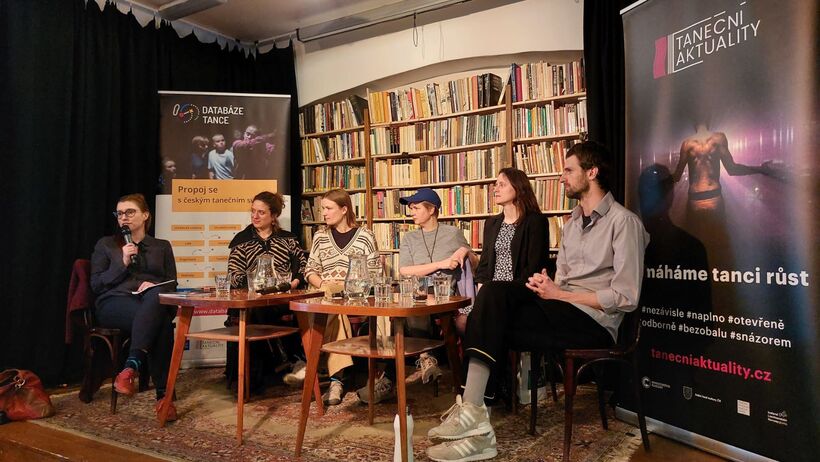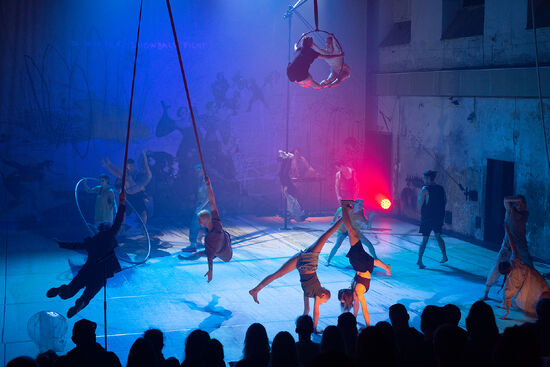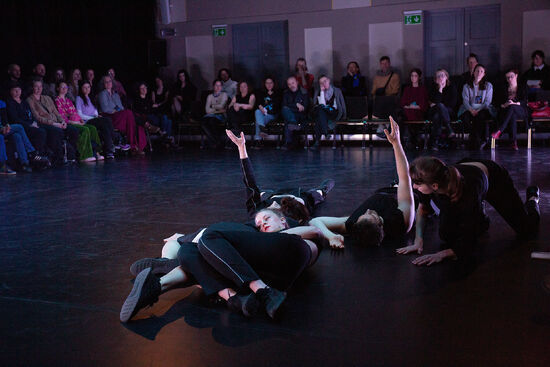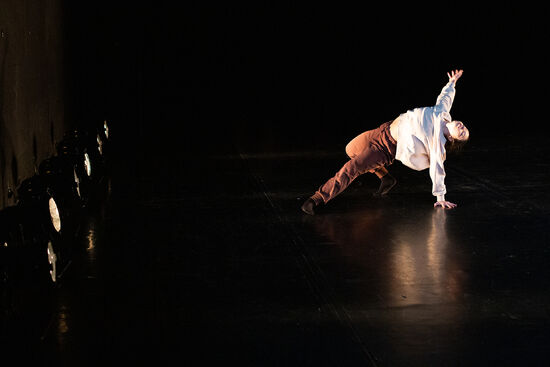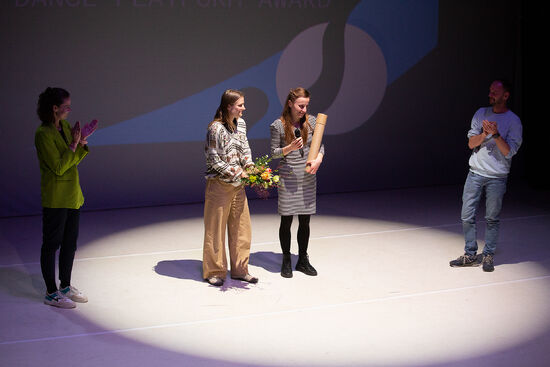Czech Dance Platform 2023 – Equilibristics, pure dance and togetherness
In early spring, Prague traditionally hosts Czech Dance Platform, a showcase of “the most interesting Czech contemporary dance and movement theatre.” The festival attracts a large, international audience of theatre managers, festival directors and journalists. This year was no exception. Between 30th March and 2nd April, ten works, selected by a dramaturgical council, were presented in a packed programme that guided spectators around various theatres, cafés and parks across the Czech capital.
The ten works selected for this year reflected not only the diversity and international character of the Czech dance scene, but also the difficult geo-political situation in Europe. Two pieces included Ukrainian artists, who found refuge from the war in the Czech Republic, and still continue to develop their art.
This kind of festival, which tries to present as much as possible within a short period of time, always poses challenges for both its organisers and participants. For example, an overall dramaturgy of the selected works is not always evident. This said, Czech Dance Platform’s team successfully managed to develop clear dramaturgical threads for each day of the festival, which I really appreciated.
Equilibristics
Day one’s theme could be described by the word equilibristics—there was a strong focus on the relationship between bodies and objects, and the four works on show all fell into the categories of new circus, movement theatre, and object-based theatre.
In Thin Skin by trapeze artist Eliška Brtnická, audiences were presented with a playful study on the subject of trapeze, and the physical possibilities offered by its deconstruction and reconstruction. In a meditative atmosphere, the deep concentration of the performers overflowed into the auditorium of the white empty gallery space. The piece also contained many surprises and beautiful images that were created by interaction of bodies, objects and light. As a result, this piece was honoured with the festival’s main award. The international jury stated that Brtnická’s “work creates a certain multidimensionality through a poetic blend of contemporary movement language and new circus. (…) This work realistically expands the limits of our imagination.”
Microworlds by Jazmína Piktorová and Sabina Bočková also created space for attention and concentration, yet it was aimed at a younger generation of spectators. Working with small objects, bodies and their micromovements, the performers drew our attention to the little things in life, encouraging us to view them as fascinating. It clearly resonated with young and older audiences alike, as Microworlds was also awarded Czech Dance Platform’s main award. The jury appreciated that its “interactive approach breathes imagination and opens up a whole new universe for children, families and everyone else in the audience. The jury particularly highlighted the concept of returning to nature. The authors set out a path that brings us from the accelerated big world to the small, fragile and vulnerable aspects of our human existence.”
The next two shows of the first day featured completely different energies and aesthetics. The new-circus production Boom vol.2 by Cirk La Putyka, for example, was billed as bringing the world of today’s young people onstage, focusing on topics such as smartphones, the digital age’s overload of information and images, fast communication and declining concentration. The speed and changing of disciplines (couple acrobatics, cyr wheel, arials, hoops, Chinese pole, juggling, street and contemporary dance) was indeed overwhelming. It was also soon disrupted—just like Boom Vol.2’s creation process, and all of our lives – by the beginning of the war in Ukraine, and the arrival of refugees across Europe. The acceptance and inclusion of young Ukrainian circus students became the new topic of the piece, which ended up reflecting the real-life development of events. However, while the show contained impressive acts, beautiful and even touching moments, its disconnectedness and length was detrimental to the overall effect.
The day ended with Seismic, which choreographer and scenographer Marie Gourdain co-created with physical artists (and clowns) Felix Baumann, Sean Henderson, Till Jenewein and Halka Třešňáková. The main performer, however, was an ingenious construction of wood planks, springs, screws and many wooden cubes, that terrorised the human performers and put them in difficult situations. A wonderful metaphor of power relations in the age of Anthropocene, the piece put people and objects in a state of codependence, where each movement had (often unexpected) consequences. Hilarious, impressive, funny, terrifying… often with a thin borderline between these affects.
Pure dance and togetherness
If the first day of Czech Dance Platfrom presented works that blurred the boundaries between disciplines, the pieces in the rest of the platform focused purely on the body in movement. This is not to say, however, that there was a lack of diversity or variety of expression.
Quintet TETSU – The energy that Shapes Us by Brussels-based Slovak choreographer Peter Šavel showcases the explosive energy of five dancers who place the joy of movement, music and of being together centre stage. The spectators, who sit around the edge of the dance floor, were not directly invited to take part in the onstage antics, but if they connected energetically with the performers and the music by Marián Závarský, they were certainly in for an enjoyable ride.
In the round seating was a theme of the day, as Anomalia, by choreographer Eva Urbanová and danced by Joana Simoes, was also presented in this format. Here, the spectators witnessed a birth (and perhaps even demise) of a peculiar creature, through a carefully crafted dramaturgy of light, music and physical action that took place on a circular white platform. The dancer’s expressions and movements were, at times, almost scary and physically painful to watch, and demonstrated off her performative mastery. On the other hand, the overly long ending, which played with light and darkness, dissolved concentration and tension that had accumulated over the course of the performance.
In the experimental piece Soft Spot by Hungarian choreographer Adrienn Hódd, the audience had the option to sit, stand, or even walk around. Like the previous two performances, Soft Spot also focused on its performer’s—Slovak dancers Martina Martina Hajdyla and Soňa Ferienčíková—bodies, as they employed and explored movement material from their individual dance histories. The fact that the dancer’s faces were covered throughout the piece—at times, they even wore special helmets with defiling words written on them—meant that their performances acquired ambiguous meanings, which could become political for some, personal for others. Despite their covered faces, the performers were not so anonymous in the end: the festival jury praised Martina Hajdyla with the Czech Centers Award (formerly known as the “best dancer” award), “for her ability to highlight the eloquence of the body and her indomitable determination to create a new space for our imagination and our own associations with her being and performance on stage.” The jury also gave the piece’s lighting designer, Tomáš Morávek, a special mention.
Day three of Czech Dance Platform saw the presentation of two very stylistically different dance works. First up was Yana Reutova’s ‘Together Alone’, which brought together five young dancers from various Ukrainian cities who all found refuge in Prague. Combining excerpts of Ukrainian poetry and music with energetic modern dance aesthetics, the piece not only thematized their difficult situation, but also highlighted their artistry. The young talent Diana Krushch’s performance was particularly impressive, and was subsequently awarded special mention by the festival jury.
The last piece of the festival, Prima by Viktor Černický, also celebrated togetherness, this time between professional and non-professional dancers, who shared the stage here. Minimalism in movement—as well as light and costume—and mutual support were the cornerstones of this work, which is created anew with casts of amateur dancers from local communities each time it is performed. The movements and interactions between the performers produced not only the soundscape through steps, claps and voices, but also humorous images and situations. In a way, the lightness and friendliness of this piece embodied the overall atmosphere of the festival.
Czech Dance Platform’s rich offering of performances was supplemented with other activities including morning discussions about the works, led by Maja Hriešik (SK) and Lisa Reinheimer (NL), “artist trips” through the city and its parks, and various networking events. As a part of the accompanying programme, Czech Dance News also organised an open panel talk titled ‘Dance Art Reflection: Dialogue between critics and artist’, where artists Viktor Černický, Marie Gourdain, and Sabina Bočková discussed dance criticism and what it could be with international critics Anette Therese Pettersen (NO) and Lena Megyeri (HU). The talk can be viewed here.
2023’s Czech Dance Platform showcased the openness and international– or transnational? —character of the Czech dance scene, which welcomes crossover projects that focus on the body and its expressive potential, and includes artists who work across disciplinary and national borders. This year was the festival’s 29th edition, and it was heartening to see many choreographers and dancers returning to the festival. This continuity, despite difficult conditions in the Czech cultural sector, deserves respect. It’s also incredibly fruitful: Czech Dance Platform has frequently leveraged invitations and opportunities to perform abroad for many Czech and Slovak artists, with several being included in the prestigious selection of European contemporary dance network Aerowaves. It will be interesting to see which works resonated the most with this year’s international guests, and to what extent they will invite Czech artists to their events and theatres over the next 12 months.
Editor's note: This text was written as part of the project Dance Criticism in a European Context. The project was supported by the Ministry of Culture, the National Recovery Plan and the European Union.




